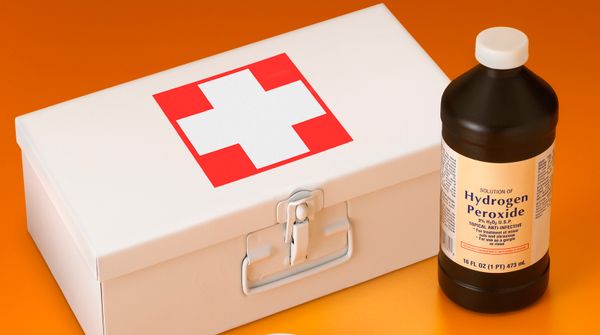
What do you get when you combine two molecules of hydrogen and two molecules of oxygen? You get H2O2, more commonly known as hydrogen peroxide. Used in the food, papermaking, textile and electronic industries, among others, peroxide is a great disinfecting and bleaching agent. It is clear and colorless, and when poured over an open wound, peroxide will kill many types of microorganisms. It's also an extremely stable compound — when properly stored. Which is why when you buy hydrogen peroxide, it comes in a brown plastic bottle.
Here's why: Many chemical compounds break down over time, and hydrogen peroxide is no exception. Although it is extremely stable, the solution can start to decompose when it comes in contact with light and heat. The brown bottle in your medicine cabinet is a bulwark against those two catalysts. Light cannot penetrate the tint of the brown bottle, preventing oxidation, which can result in an increase in temperature.
Advertisement
As peroxide breaks down, it gets hotter. As a result, the compound's decomposition rate accelerates. In fact, for every 10-degree Celsius rise in temperature, the decomposition rate nearly doubles. Moreover, if some sort of contaminant, such as dust, silver, lead or other metal, gets into the solution, it can spark a fire, although the solution itself is not explosive.
Those in the industry must handle hydrogen peroxide with care. If the solution is in a closed system, such as a storage tank, and it starts to break down, pressure can build up causing the tank, a pipe or a line to rupture. The good news is that the bottle of peroxide in your medicine cabinet contains only a 3 percent solution, far less than the 35 percent that the food industry uses, for example.
Advertisement


